
April 20, 2018
In the new digital world,
you can’t succeed on your own.
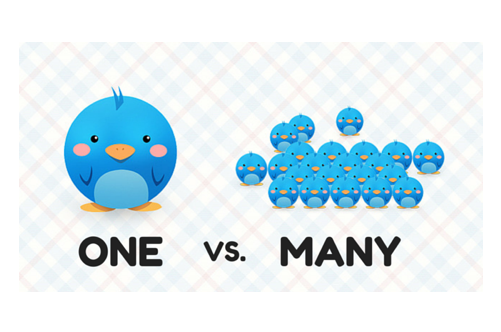
As I wrote in an earlier blog, historically companies believed that owning and controlling assets was the key to creating sustainable competitive advantage and building high barriers to entry into their markets and industries. However, in the new age of digital disruption, companies no longer have the capital, resources and capacity to own and operate all the assets they need to compete against well-constructed and well-orchestrated business partner ecosystems.
This new competitive environment now puts a premium on asset deployment rather than asset ownership to create sustainable competitive advantage and build high barriers to entry into their markets and industries.
As Uber and Airbnb among others have shown us, deploying digital technology with its widespread connectivity to leverage underutilized assets is the new business model for profitable growth. Without having to spend their scarce capital to own assets, companies can access and deploy alliance partner assets at minimal marginal costs.
The business case for building strong strategic business partner alliances
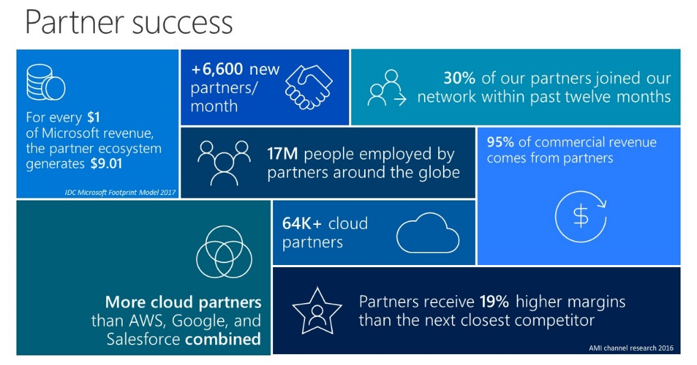
A well-constructed and well-orchestrated strategic partner alliance delivers exceptional financial returns and significantly increases competitive advantage as the statistics below highlight:
- Twenty years ago, business partner alliances counted for less than 3% of a company’s total revenue. Today that number has risen to 30 to 40%.
- For every one dollar of Microsoft revenue, the partner ecosystem generates $9.01.
- Partner alliance revenues generate 19% higher margins than the next closest competitors.
Building successful strategic partner alliances requires new skills, tools and resources
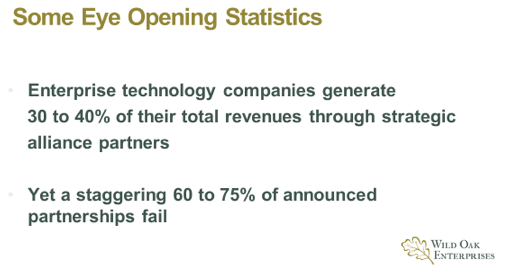
The increasing contribution of revenue, margins and net profits from alliance partners necessitates that companies acquire the critical skills, tools and resources necessary to make them successful. Simply put, failure presents an existential threat to a company’s competitive viability.
Historically enterprise technology companies generated revenue by managing the development, delivery and maintenance of their hardware and software offers. Today revenue is increasingly coming from managing the partner relationships around a set of combined technology offers. This now puts a premium on alliance leaders to be able to recruit strong alliance partners and get them aligned with and in support of delivering critical business outcomes. That takes a very different skill set.
This increased level of relationship complexity was highlighted in a recent Constellation Research survey of B2B marketers which revealed that “to plan one marketing campaign that requires coordination with another group or partner can take upward of 53 steps and communication touch points.” To successfully manage this increased level of relationship complexity requires new tools and resources.
The arrival of alliance automation platforms to drive successful partner alliances
There are some root causes that illuminate why most partner alliances either underperform or fail as shown on the diagram below and include:
- No clear accountability against agreed upon performance outcomes
- Lack of trusted data
- Lack of transparency and delays in alliance operational performance reporting
- Difficulty and inability to properly quantify results
- Communication gaps within and across alliance partners
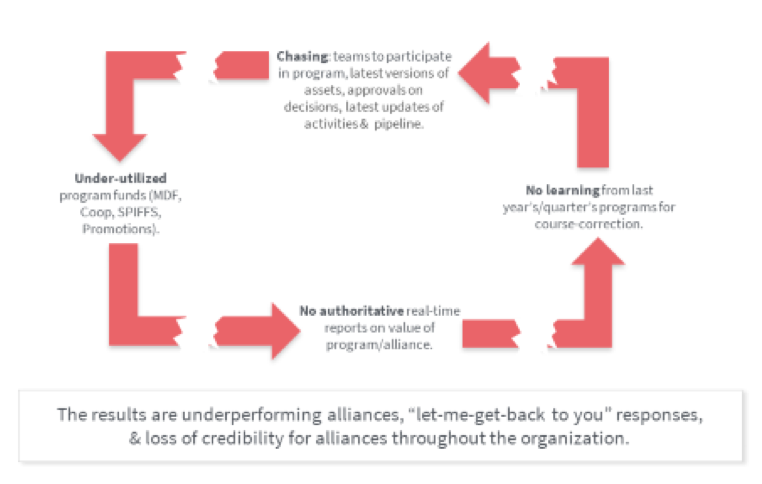
To successfully address these root causes requires an automated alliance partner network that provides:
- Total go-to-market alignment across the entire partner network
- Complete transparency across all joint initiatives
- Real time alliance performance metrics and reporting
- Increased ROI on alliance partner investments
- Discovery of additional partner alliance opportunities
Some early adopter use cases

This integrated alliance automation system has allowed these early adopters to:
- Limit the friction between going to market and getting to market
- Provide real-time reporting and analytics that show the value of their partner/alliance go-to-market efforts
- Make program course corrections in real time instead of doing post-mortems after the fact
- Close more sales opportunities with 30 percent higher velocity and win rates
- Achieve 100 percent faster new product launches
- Drive usage of joint funds from 60 percent to 100 percent
- Deliver 3x better ROI on joint marketing campaigns
A recent joint business partner alliance marketing campaign between SAP and Intel launched on WorkSpan achieved the following results:
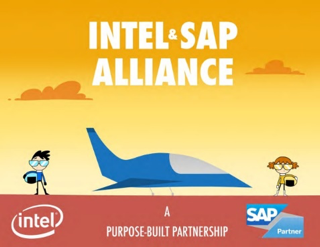
- Generated 174 proposals from over 30 countries
- Doubled the number of marketing campaigns run to 138 with the same headcount and minimal increases in cost
- Achieved a 24x ROI (revenue impact for marketing dollars invested) vs. a goal of 10-11x
While companies are still in the early stages of discovering and realizing the financial and competitive benefits of integrating and automating their strategic business partner alliances, the early results suggest that mastering the art and science of asset deployment is the new business model for creating sustainable competitive advantage. Trying to succeed on your own in the new digital world is no longer a viable alternative.
As always, I am interested in your comments, feedback and perspectives on the ideas put forth in this blog. Please e-mail them to me at pdmoore@woellc.com.


